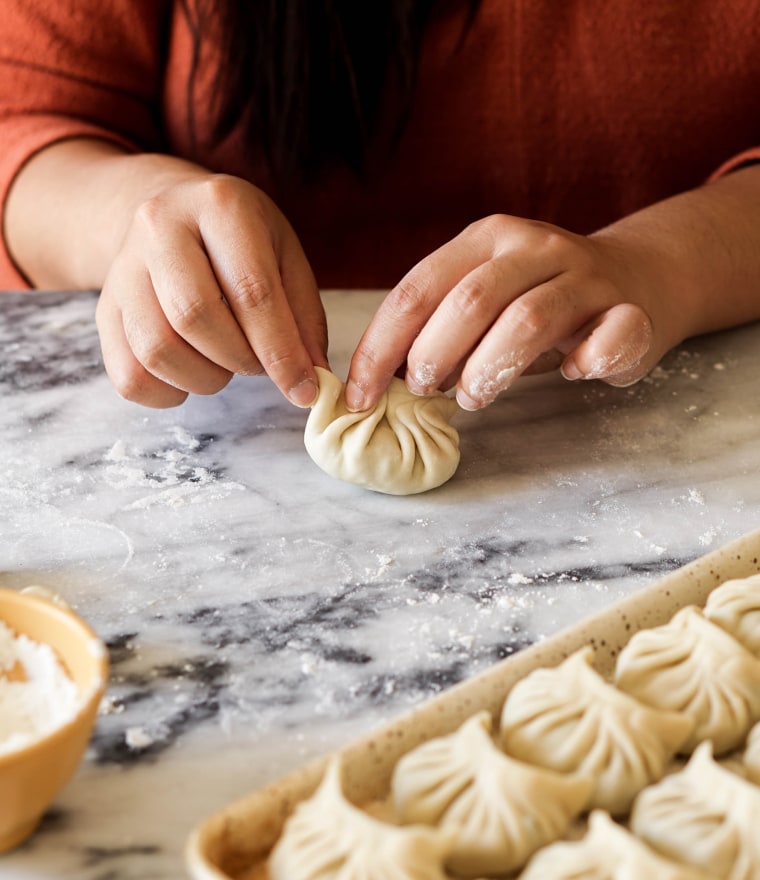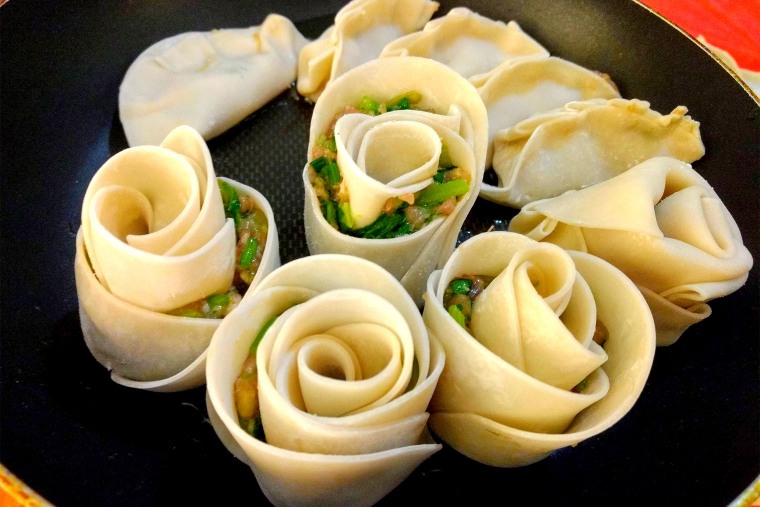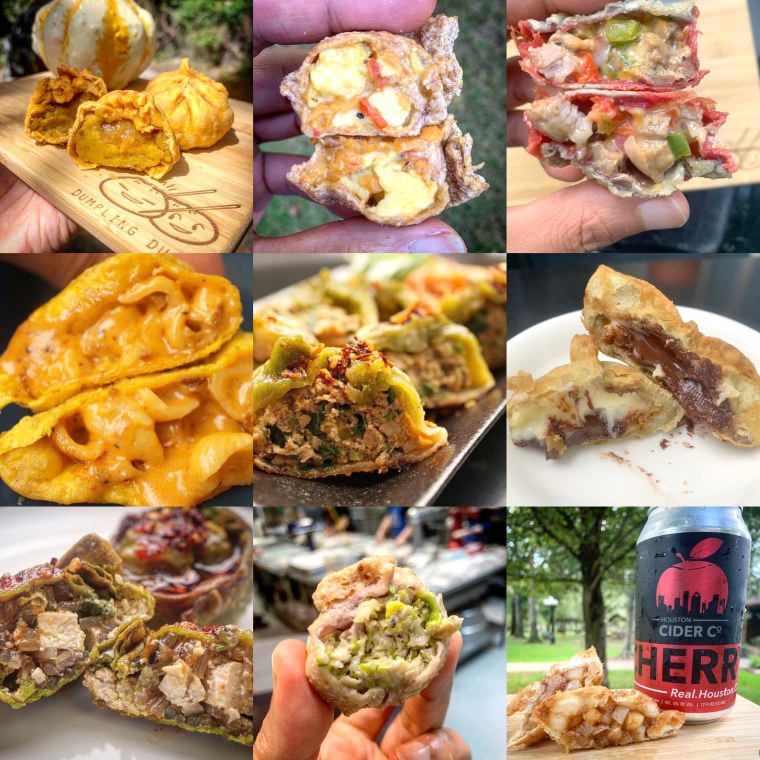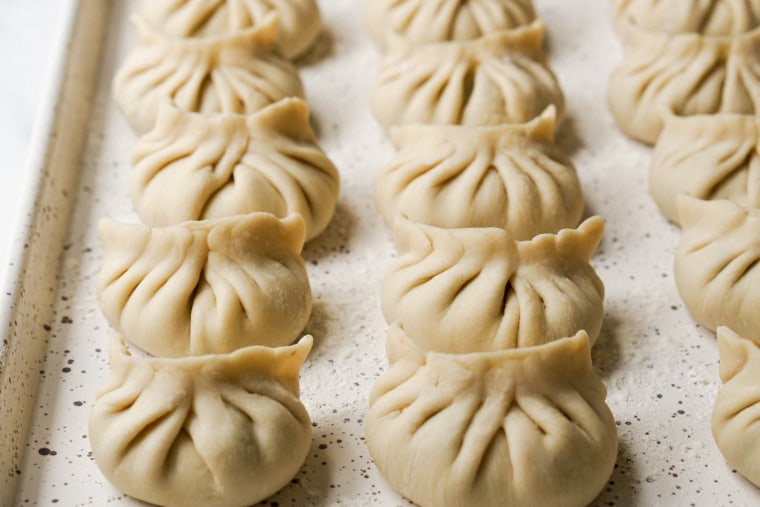Kristina Cho, a first-generation Chinese American who grew up making dumplings at her grandfather’s Chinese restaurant, recalls her family members settling into their distinctive dumpling-making roles each year: Her father would be pleating, uncle would be wrapping and mother would be cooking while others would lounge around and eat at the table.

“Dumplings are meant for family-making because it is a laborious process,” said Cho, a food blogger and recipe developer based in San Francisco, who has been teaching virtual dumpling workshops since the onset of COVID-19 last March.
Dumpling making, the long-held Lunar New Year ritual, is usually done over festive reunion dinners, chatter, nosy relatives and families who assume tacitly doled out roles to usher in a celebration of new beginnings, wealth and good fortune.
“Dumplings are meant for family-making because it is a laborious process."
The Year of the Ox on Feb. 12 is the second new moon after the Winter Solstice and the second animal on the Chinese zodiac signifying diligence, conscientiousness and patience. And just as this year's sign embodies tirelessness, Chinese dumpling-making workshops are striving to preserve the communal tradition through online platforms during the pandemic.
Because dumpling making is such a collective process, the distance forced by the pandemic feels multiplied. “I transitioned my in-person classes to a virtual format because I was missing human connection,” Cho said. “It was a source of joy or entertainment for other people, too. So, it worked both ways.”
For Cho, retooling for remote instruction meant tailoring her class recipes to be adventurous and open to any meat or vegetables rather than a specified sort, which offered room for creative dumpling fillings such as smoked tofu, shiitake mushroom, collard greens and shrimp.
Dumplings or jiaozi, which is also associated with prosperity in Chinese, is made by store-bought or handmade dough that consists of flour, hot water and a pinch of salt, according to Cho, who says building dumplings from scratch makes all the difference. Traditional fillings include a blend of seasoned ground pork and napa cabbage, which is then sealed, pinched and usually boiled during the Lunar New Year.
“You need to find a workable dough with the right balance and texture that is not too stretchy or stiff so it can get all those intricate pleats in there,” Cho said, who pointed out that the art of dumpling making demands rigor, finesse and clean pleats in uniform sizes. “I always tell people that you shouldn't make dumplings for people you don't care about because it's a serious labor of love. It's an art form.”
Yin Yang, founder of The Dumpling Academy in the Chinatown district of Philadelphia highlighted the importance of showcasing the subtle dumpling folds because of the tradition it carried in Chinese culture.


“People need to closely watch my finger movements when I fill the dumplings. In China, different dynasties had their own money, which is why some folding styles are named after a currency,” said Yang, who came to the U.S. in her 20s from Xuzhou, a region in northern China celebrated for its tradition of dumpling making. “The more dumplings you make, the more fortune you’ll have that year.”
The most common yuan bao fold, resembling the gold and silver ingots used in imperial China since the Qin dynasty until the fall of the Qing in the early 20th century, folds the wrapper in a semi-circle and seals the two ends together completely.
Other versions, such as the rose-shaped fold, simply rolls the dumpling after securing the edges to prevent fillings from falling out.
The custom of making and eating dumplings that mimics the shape of ancient Chinese money was allegedly popularized during the Ming dynasty of the late-1300s to early 1600s, which also used gold and silver ingots as currency.
But Chinese stuffed dumplings originated in the Han dynasty and lasted until the early third century. According to Asian folklore, a man returning to his ancestral village during the winter cooked a batch of mutton, chili and herbs, and wrapped it in scraps of dough shaped as little ears to provide to neighbors suffering from frostbite, particularly around their ears.
Yang said she remains wistful for the pre-pandemic days, when she would intersperse her lessons with culture, lore and trips to local Asian markets in Chinatown with her attendees before class, signaling which aisles and shelves to go to buy certain ingredients unaccompanied later on.
Her workshop was one of the small businesses in America’s struggling Chinatowns that have been financially hit in the pandemic. Yang currently does not own a rental space after moving out last May because of the steep costs and unforeseen future.
Now, in place of these community-oriented events, she has invested in two cameras to host her first post-pandemic dumpling workshop during the Lunar New Year. One will capture overall shots, while the other focus on her hands.
Michael Dorsey founded Dumpling Dudez in Houston, with his partner, Chih Lin, but they were forced to close and pivot to virtual dumpling making in October because of the pandemic. Dorsey said he wasn’t as concerned with translating the intricate folds over online Zoom calls as he was in preserving the sense of community intrinsic in dumpling-making.

Their in-person classes involve various doughs with color schemes such as red, orange, yellow, green, blue and purple, which attendees would pick and swap with one another over a common bowl.
“In our virtual classes, we give everybody a sample of all doughs,” Dorsey said, adding that they offered pick-ups for virtual experience kits and had to forgo their workshops’ on-site bonding, reminiscent of an art class. “Now everybody gets their own personalized, COVID-friendly, vacuum-packed package of dough in a box, not in a commercial kitchen. That community of sharing food is a bit different, but we still get to share the experience together.”
Cho, who donates a portion of her quarterly proceeds to charity, said she has raised $500 this year towards Save Our Chinatowns, a grassroots initiative to support the community hubs around the Bay Area. While the coronavirus restrictions and racially motivated fears have left many Asian Americans frustrated, she said it shouldn’t hinder the essence of the holiday.
“There's a lot of tension built up right now for the Asian community,” Cho said. “It’s almost hard to celebrate. But we’re trying to find the little joys, and making food just might be all that you need.”
This story first appeared on NBCNews.com.


